Pruning is one of the maintenance practices intended to improve your tree's health, structure, and aesthetic form. But you must do it properly and adhere to specific guidelines. We researched why over-pruning kills your tree and have these answers below.
Over pruning can kill a fruit tree since it needs leaves to produce food and for its overall health. So, the lack of foliage can deplete nutrients and starve the tree.
In addition, removing too many branches results in multiple wounds on the tree's surface and provides entry points for parasites that make it vulnerable to disease.
Regular pruning is a good practice because it benefits the tree in many ways. Read on to learn how to prune your fruit tree and optimize its growth, development, and yield. We cover which structures to remove, how much foliage to take off, proper pruning techniques, and more. Let's begin!
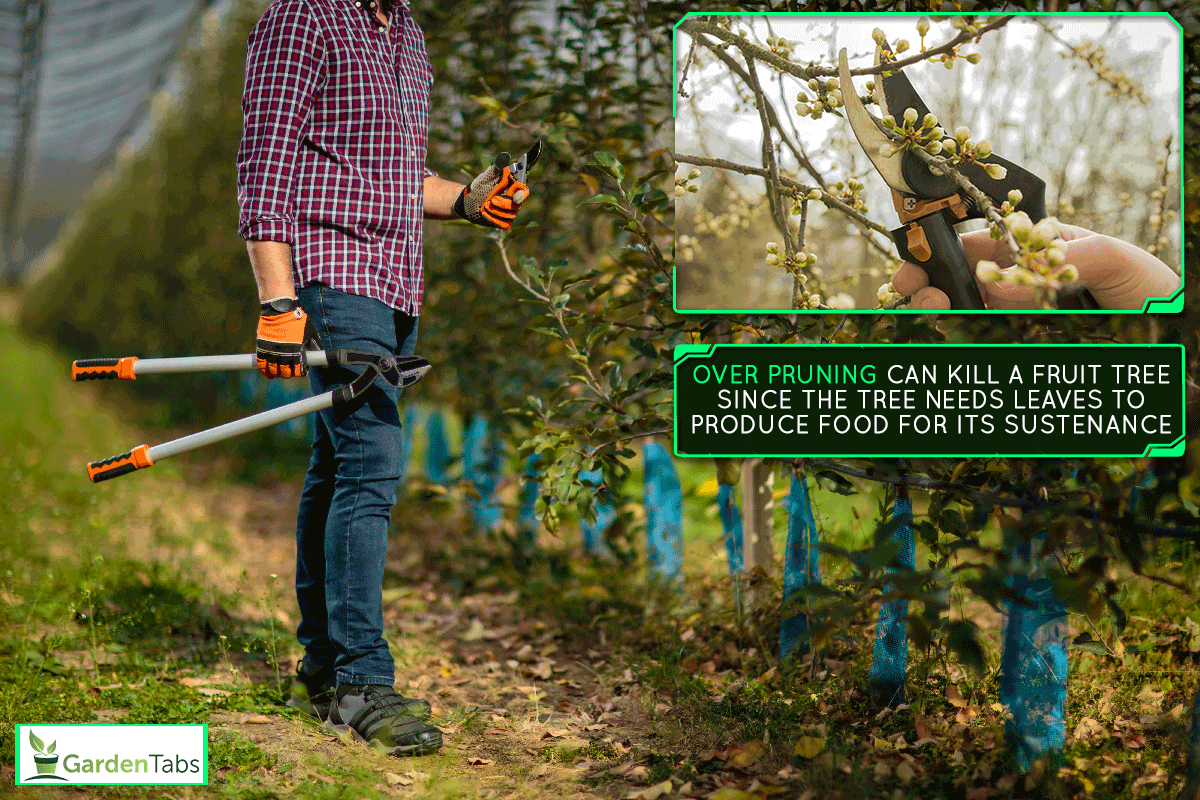
Remedies For Over Pruned Trees
You can considerably reverse the damage caused by over-pruning through adequate watering, fertilizer application, and pest control.
Watering
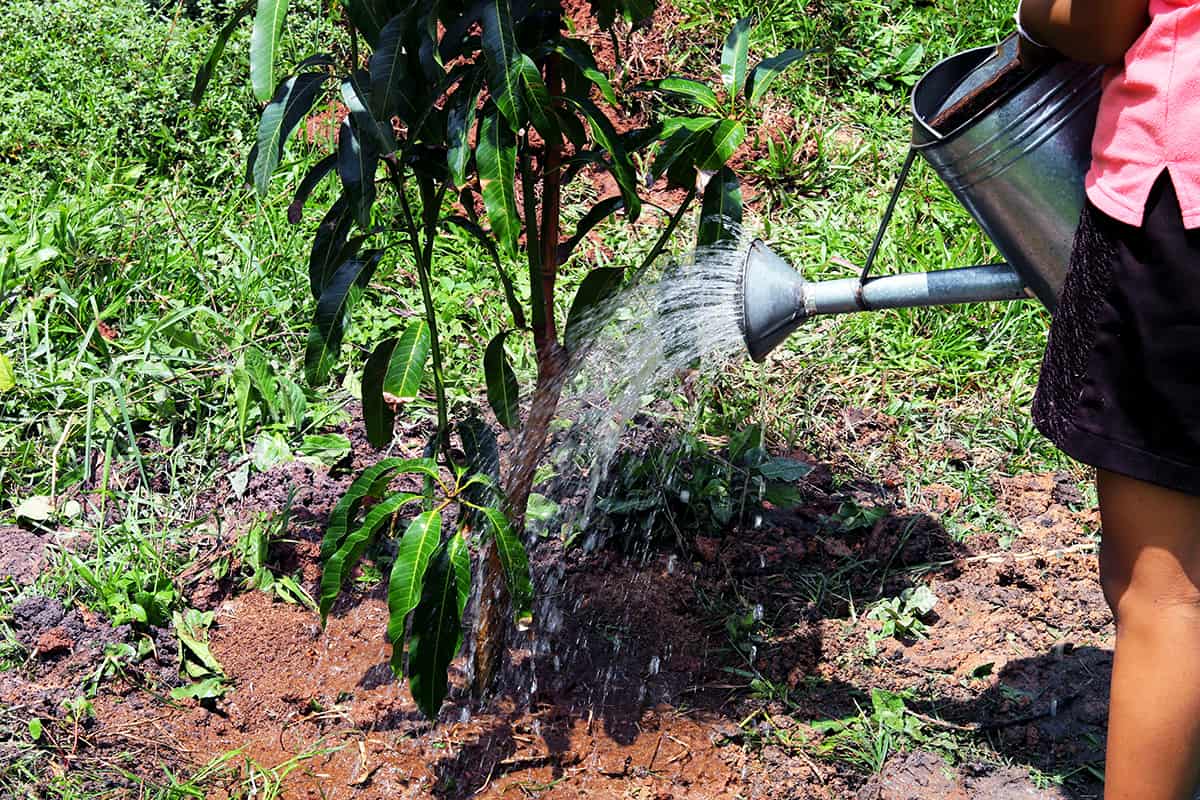
When you defoliate a tree, photosynthesis does not occur. Consequently, water and nutrient uptake become compromised.
Adequate hydration can compensate for this condition and help the tree's recovery. Keep the tree's base moist but refrain from over watering to avoid subjecting the root system to more stress.
Apply Fertilizers
Without leaves, the tree cannot manufacture its food. Therefore, it requires an alternate source of nourishment.
All-purpose fertilizers with equal contents of nitrogen, phosphorus, and potassium can provide adequate nutrients. You can supplement the application by adding a layer of mulch which will act as a source of organic matter.
See this all-in-one concentrated additive on Amazon.
Pest Control
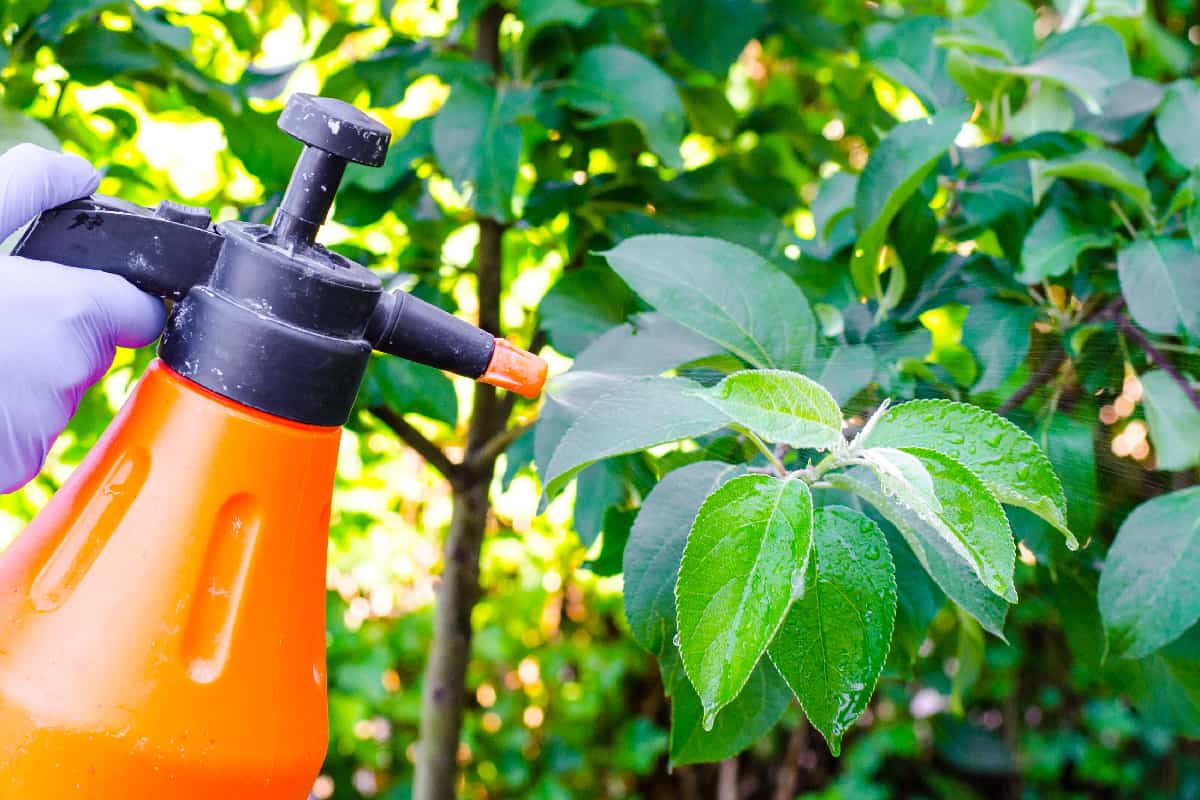
The multiple pruning cuts create wounds that expose the tree to potential parasites and diseases. You can use a general-purpose spray to counter infections and provide adequate protection for your tree.
The main advantage of this application is that the chemical ingredients are relatively dilute and low in toxicity. You can use insecticides or fungi sprays if a specific type of pest infects the tree.
Check out this Neem spray on Amazon.
Why Should You Prune Your Trees?

Gardeners and plant enthusiasts trim trees to achieve the desired form or a visually appealing shape. But more benefits accrue when you prune the tree the right way.
These benefits include: promoting new growth, improving the structure, and eliminating dead or diseased portions of the tree. We discuss more below.
Encourage New Growth
Generally, a tree's most active growing points are at the apex (terminal bud), where nutrients are concentrated and highly available.
As the tree elongates, it forms lateral nodes that are potential leaf sites. However, because of apical dominance, the lateral nodes develop slowly since the terminal bud directs their growth.
When you prune the apex, the tree diverts nourishment to the nodes and stimulates the emergence of leaves, flowers, and fruit.
In essence, pruning reduces the parts the root system needs to nourish. Consequently, the water and nutrients absorbed are distributed more abundantly.
Improve Plant Health
Regularly pruning the foliage or canopy allows light to penetrate and air to circulate the tree's interior structures, which is necessary for the fruits to develop and ripen for harvest and consumption.
Moreover, pests like fungi are less likely to infest sunlit and well-ventilated trees. If you spot parasites, pruning off infected leaves and branches prevents their spread and contamination.
The dieback process consumes energy. Therefore, cutting dead branches that no longer produce fruit enhances the tree's health.
Aesthetic Reasons
Pruning allows you to manipulate and control the shape and form of the tree and its growth pattern.
Additionally, regular trimming revitalizes the trunk and branches while creating proportioned growth that enhances the aesthetics of your yard or garden.
By improving the overall appearance of your tree, landscapes look more balanced and defined.
Eliminate Hazards
Sometimes branches located under a heavy canopy can die even among healthy trees. Cut off heavy limbs since they pose potential hazards. These limbs, hangers, or deadwood can fall on people or property.
Report any overgrown branches that touch power or utility lines to the local company so professionals can take them down. It is best to leave the task to properly equipped personnel.
Always check the condition of your tree after heavy rains, snow, or storms since weather-damaged branches can cause harm or injury.
Which Parts On A Tree Should You Prune?
It is necessary to prune specific parts that are not beneficial to the tree's development, overall health, and appearance.
Dead, Damaged, And Diseased Branches
These branches will only hinder your tree's growth and development since damaged portions still compete for nutrients that would otherwise nourish healthy structures.
Diseased branches can endanger proximal growth and the health of the entire tree if the infection is left unchecked and spreads.
Dead branches and heavy limbs can cause harm or injury when they snap, break free, and fall off. Prune these structures immediately.
Shoots That Grow Inward Or Downward
Shoots that grow inward or downward can cause considerable damage to the tree's stems, trunk, and other structures.
Generally, any new growth forming below the tree or on the trunk covers its central portion. So, it is necessary to prune the developing structures for proper air circulation. Without it, your tree may be prone to rot or fungal infections.
How Do You Prune A Tree Properly?
Proper pruning is essential for the overall health of your fruit tree. The general guiding principle is to take off twenty percent or less of the existing foliage and branches.
Here are the methods and techniques you can use:
Heading
Heading entails cutting the terminal bud (the endpoint or highest part of the stem). This process stimulates or encourages the growth of new shoots, resulting in more compact and lush foliage.
It generally impedes the upward growth of your tree because these new stems will develop sideways.
Thinning
Thinning involves removing an entire branch by cutting it close to the trunk. It allows sunlight to penetrate the canopy and improves air circulation.
Cut close to the collar, and make sure you leave it intact. The branch collar is a circular node found at the branch's base; it allows the wound to heal after pruning.
Crown Lifting
Crown lifting entails cutting the crown's lower portion to provide clearance on roads and paths. The peak of a tree refers to its canopy or topmost part.
Please note that you do not have to prune the branches on the canopy's upper part.
Crown Reduction
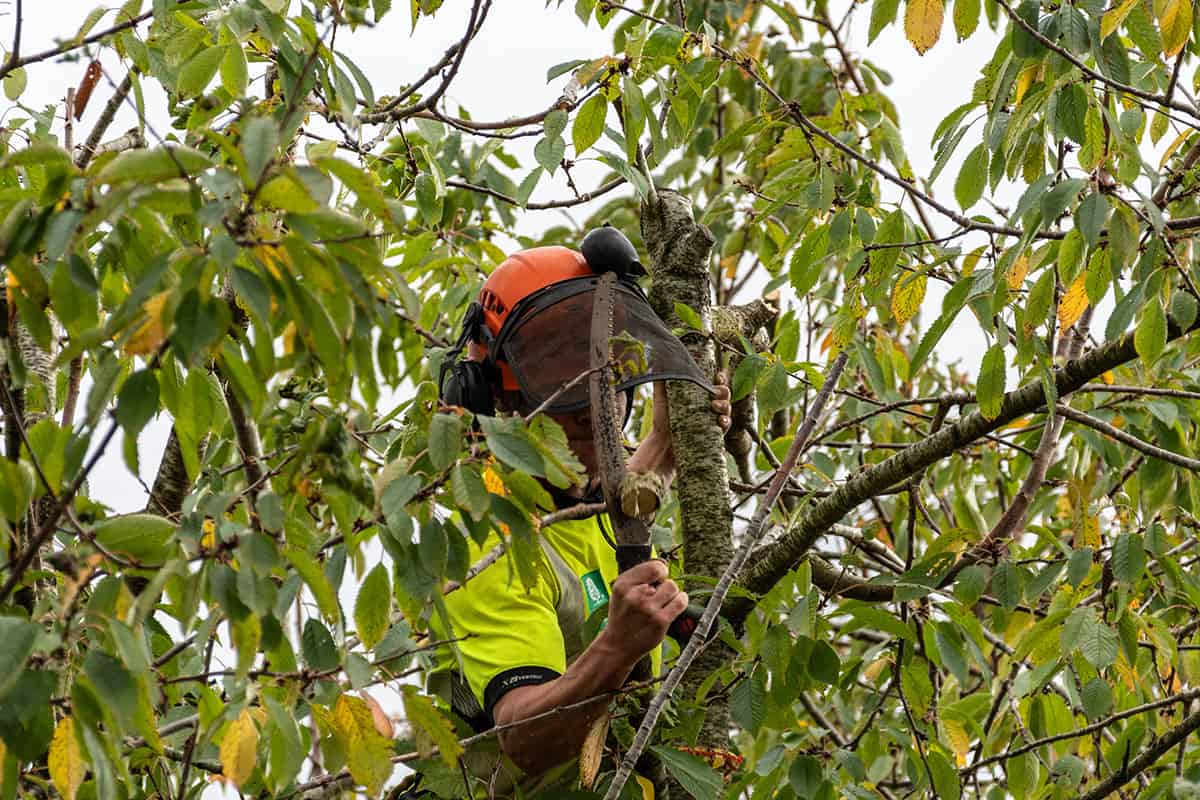
Crown reduction is used on oversized trees that no longer fit where they are situated. This technique involves shortening all the branches that make up the canopy. It helps maintain the desired size and shape of the foliage.
This pruning is not usually recommended since it results in multiple wounds or openings that render the tree vulnerable to infection.
When Is The Best Time To Prune?
It is best to prune during winter when the leaves are absent since the branches and tree structure are exposed.
Thus, it becomes easier to identify and decide which portions to prune or remove. The ideal pruning period may extend from late fall to early spring.
Avoid pruning during the summer months because it will interfere with the blooming stage, which coincides with this season.
Should You Prune Fruit Trees Every Year?
Annual pruning is advisable to eliminate unwanted structures. Furthermore, annual pruning is not as drastic as performed every three or four years.
It is easier to maintain the shape and form of the tree if regular trimming becomes part of its maintenance.
Does Pruning Fruit Trees Increase Yield?

Annual pruning reduces the yield but improves fruit quality. This is because the process itself will provide your tree with high-quality flower buds and better light exposure.
Sunlight is necessary for the development of new nodes and fruit production.
In Closing
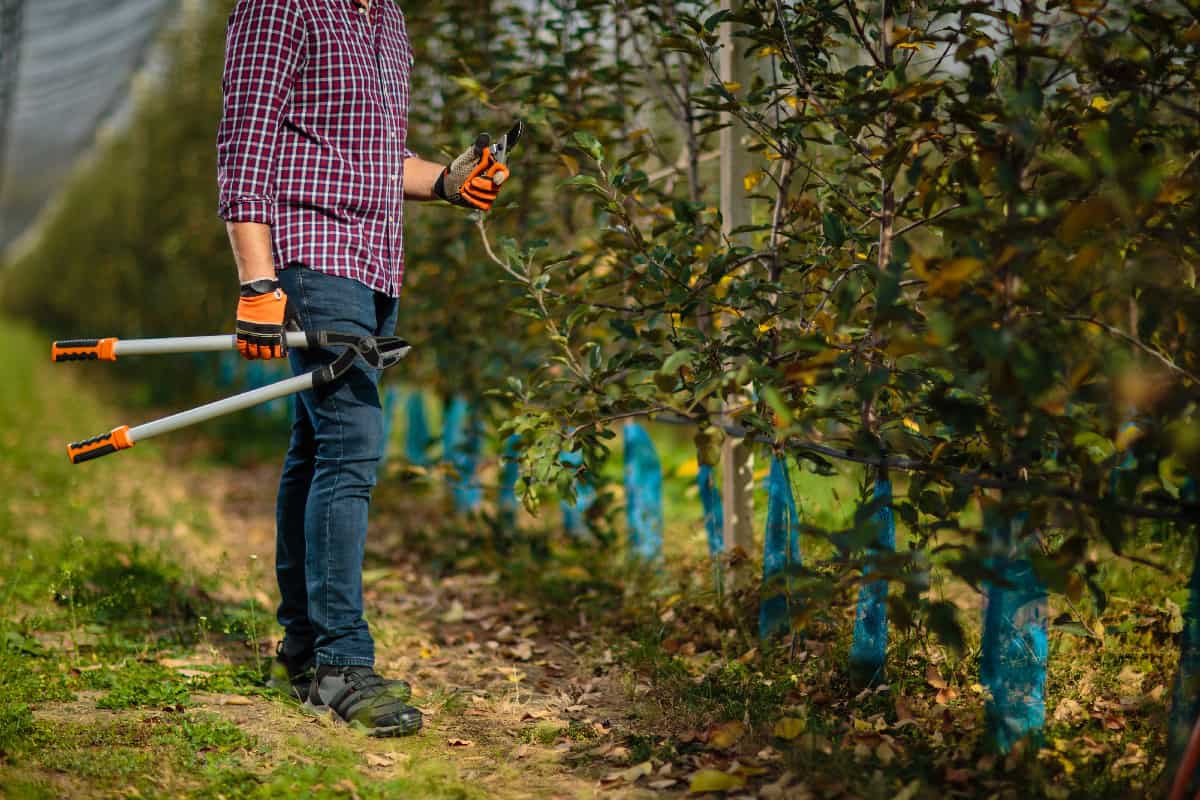
Pruning is an essential aspect of fruit tree maintenance. However, overdoing the process can affect its health, growth, and development. We hope this article has helped you learn how to prune your trees correctly.
Made it this far? Check out these helpful related posts:


